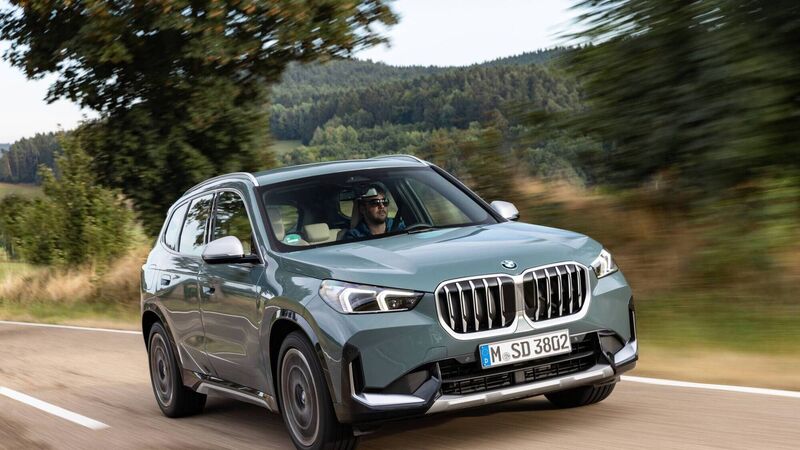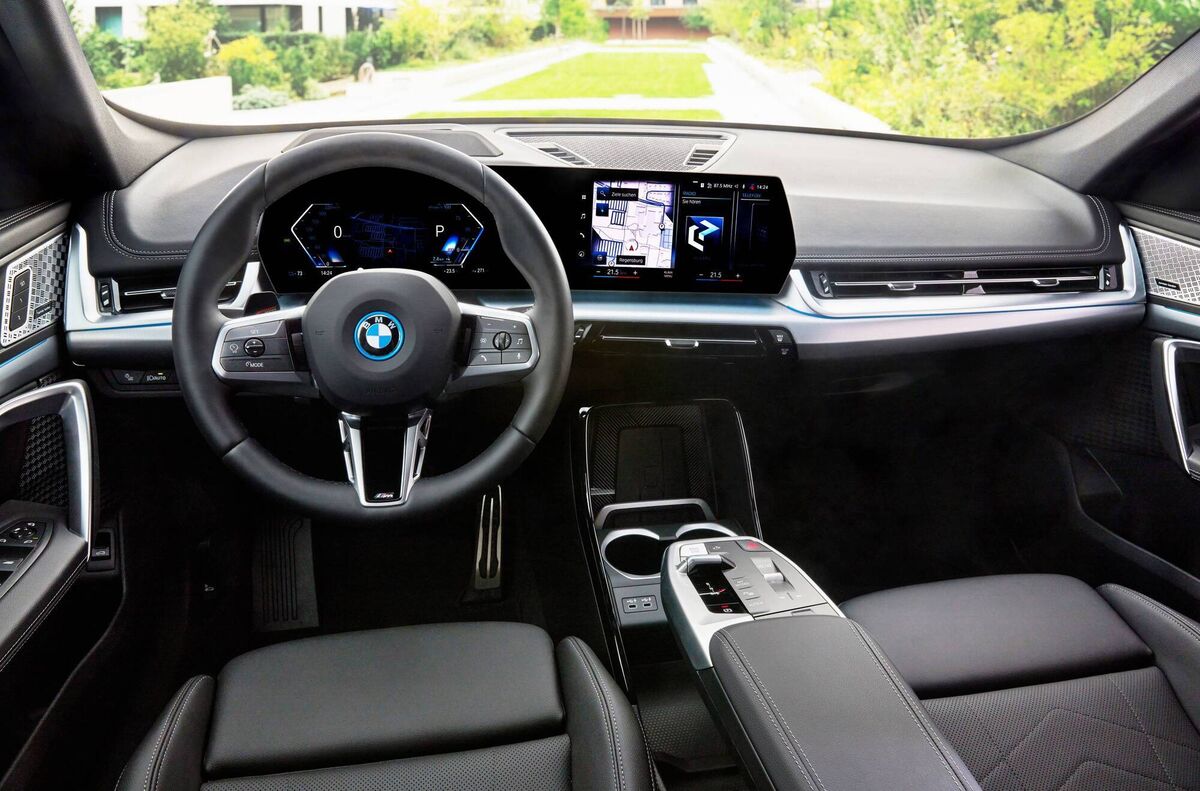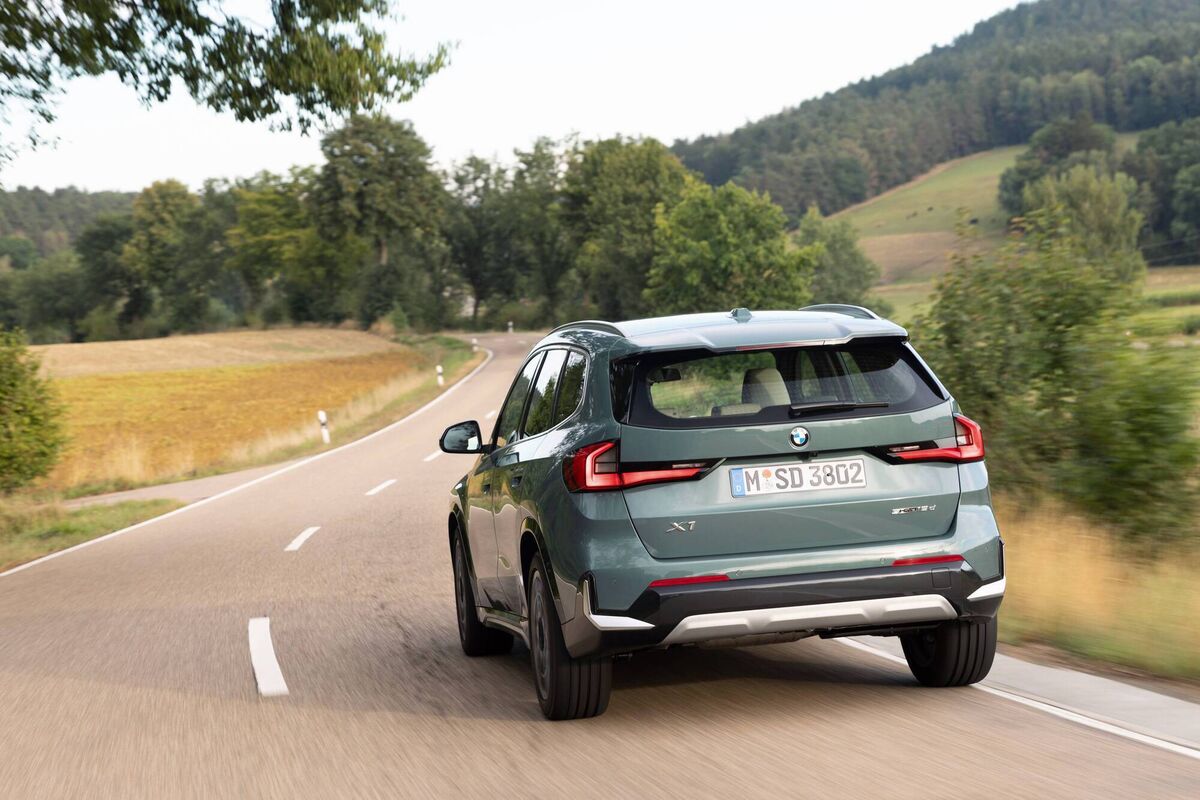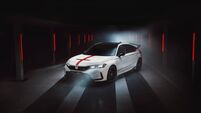BMW X1 review: An SUV that outclasses its premier opponents

The third iteration of the BMW X1 is larger than previous models now coming in at a size which is nearly the same as the X3 used to be.
|
BMW X1 |
|
|---|---|
|
Rating |
★★★★☆ |
|
Price |
from €60,990 - €65,449 as tested |
|
Engine |
a familiar and worthy 2ltr turbodiesel |
|
The Spec |
surprisingly complete |
|
Verdict |
a small family SUV for grown-ups |
The premium compact SUV segment is not, you would have to surmise given the cost of the products, a terribly huge marketplace, but it is one in which there is pretty vicious competition from such as BMW, Audi, Mercedes and Volvo, among others.
This is a segment that has grown exponentially in line with the public love affair with the SUV and we now have small, medium, large and humongous varieties of the genre and, of course, the premium brands have sought out their share of each of the various segments as they look to cash in on the popularity of these beasts.
Now, while the competition at the top is pretty intense, the buy-in price for enjoying what they have to offer comes from the top drawer and, consequently, the price of the car we are testing this week is just over the €65,000 mark and for what is, essentially, the smallest of these cars, that seems pretty extraordinary.
The BMW X1 is a car that has been with us since 2009 and it was originally intended to be a gateway car by BMW with clientele moving on up the company food chain into X3s and X5s as they matured, got partners, had children and so forth. It was based on the same platform as the 3 Series.
The second generation of the X1 arrived in 2016 and BMW pulled off something of an under-the-radar trick by making the car a front wheel drive, as it was planning to do – and did – with many of its smaller vehicles. This was a car which saw the X1 grow up a good bit and it was no longer the smallest SUV in the BMW ledger as that title was taken up by the X2.
That it walked the company away from its traditional rear wheel drive layout might have appalled purists, but it didn’t seem to matter to the punters who – on a global scale – loved it and bought loads of them. The badge, it seemed, mattered more than the engineering principles.
Now we have the third iteration of the X1 and it is even bigger again, now coming in at a size which is nearly the same as the X3 used to be. BMW has added considerable sophistication to the look of the car, to the technology available in it and to the manner in which driver and passengers are cossetted.
The new X1 is quite a deal bigger than previously. It is 44mm taller, 53mm longer (with a 22mm increase in wheelbase) and 24mm wider and that adds up to greater headroom and legroom for passengers as well as a boot with is 50 litres larger than before, making it bigger than that on offer in the Mercedes GLA, the Jaguar E-Pace and the Audi Q3.

Some might say it looks very similar to the last X1, but if you take a close look you will see a lot of minor detail changes – the headlights are revised and give the car’s face a slightly more aggressive look and the rear lights have been revised too; the body shape is a little bit more angular, especially at the rear; and, in common with a lot of the newer Beemers, the grille is a tad bigger, although not as in-your-face as some.
Most of the biggest changes are inside where the X1 shares much of its box of tricks with the 2 Series Active Tourer (also front wheel drive). In fact, the two are identical. There is a curved twin screen infotainment layout with the digital instrumentation screen in front of the driver and the touchscreen in the middle controlling all the systems.
Gone is the old rotary controller and the new system works on full touch sensitivity and it is a very clean, clear operation which does not distract you from your principle activity of actually driving the car, as so many unfortunately do.
The décor is of a high standard and the quality of the material used throughout is of a high order. There is no suggestion of flimsiness in here and the standard equipment levels are impressive, with every X1 coming with such as a powered tailgate, reclining rear seats, live navigation, climate control, adaptive cruise control and a parking camera.
What it does not have is a spare tyre and we’re blue in the face here saying that the repair kit you do get is as useful as nipples on a bull. If you live in a rural area where assistance is usually a sparce commodity, the repair kit will not do.
There are many variants of the car – including an all-electric – but the one we got to drive was the sDrive 18d, with the ‘s’ indicating it is two-wheel drive. The ‘18d’ appellation is a little confusing as the car is actually a two-litre turbodiesel and not a 1.8.
This is a familiar engine and in this guise it produces 150 bhp and a healthy 360 Nm of torque which in turn translates into an 8.9 second 0-100 km/h time and a 210 km/h top speed. And, if you’re not getting a return of over 5.5 l/100 km (just over 50 mpg) you’d want to get the lead soles removed from your shoes.

The car also boasts a brake energy recuperation (mild hybrid) system and a fancy-dan air flap control on the grille to regulate engine temperatures.
The four cylinder turbo produces power across the rev range and never seems breathless. On the handling front the tendency is towards understeer which is understandable given the power is going to the front wheels only, but in general this really only rears its head accelerating out of corners in slippy conditions.
This is a sharper car to drive than most of its rivals and this is a boon for family drivers who would be right to believe that their family car has a bit more sparkle than the alternatives. Also, in the Cape York green metallic overcoat which the tester was bedecked, it looked really cool.
The chassis and suspension, however, are well designed enough to cope with vagaries of the Irish road network and I could find few holes in the X1’s on-road behaviour. The only slight issue is that the car can be a bit noisy when pushed hard.
This is a very well rounded and equipped small family SUV, which is not as small as it once used to be and that will make it more attractive to the family buyer. That said though, it is not cheap and the 65k asking price will frighten off many potential owners.
But, as a premium family crossover it was never going to be cheap either and the same applies to its premium rivals. BMW has, unusually, been a little conservative here, but the net result is a machine which convincingly outstrips most of its direct opponents.


